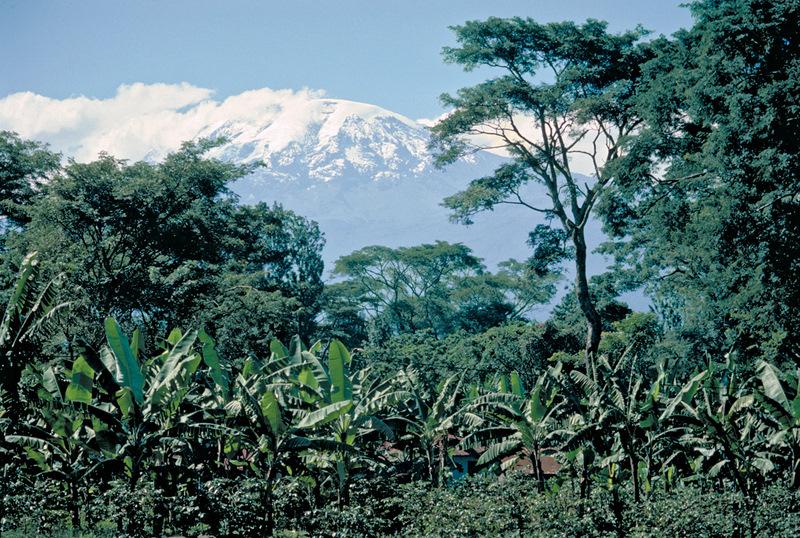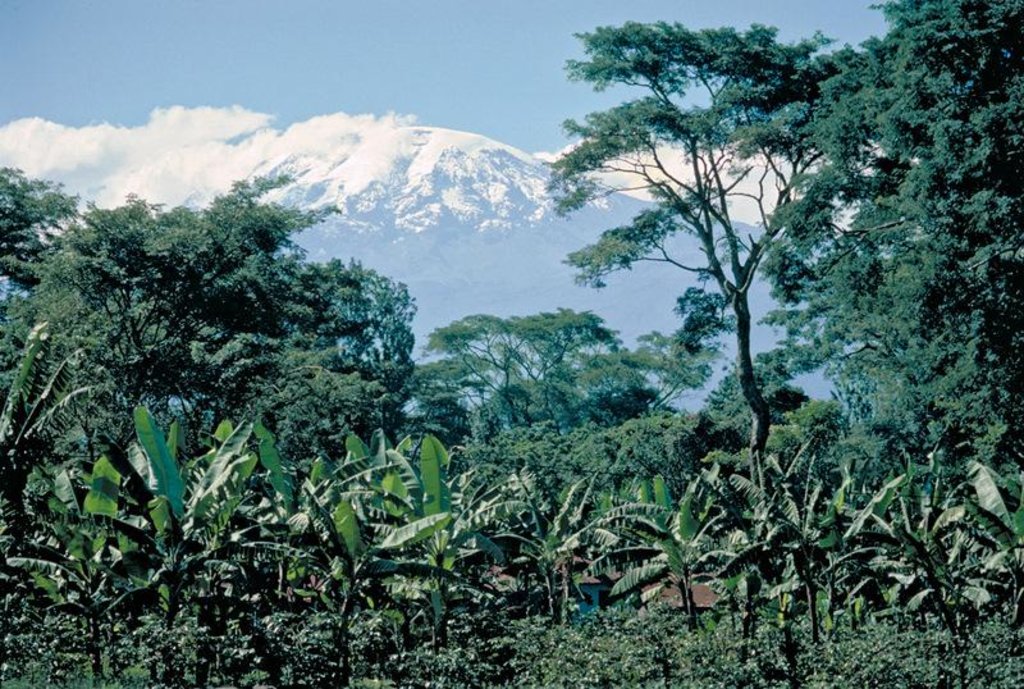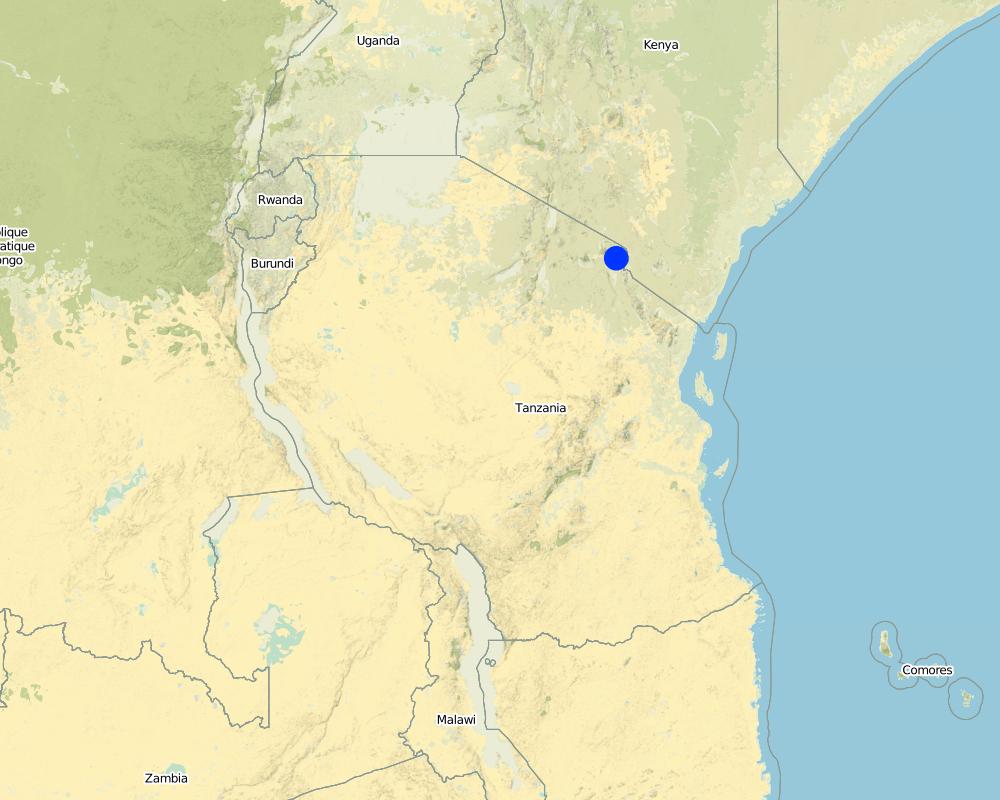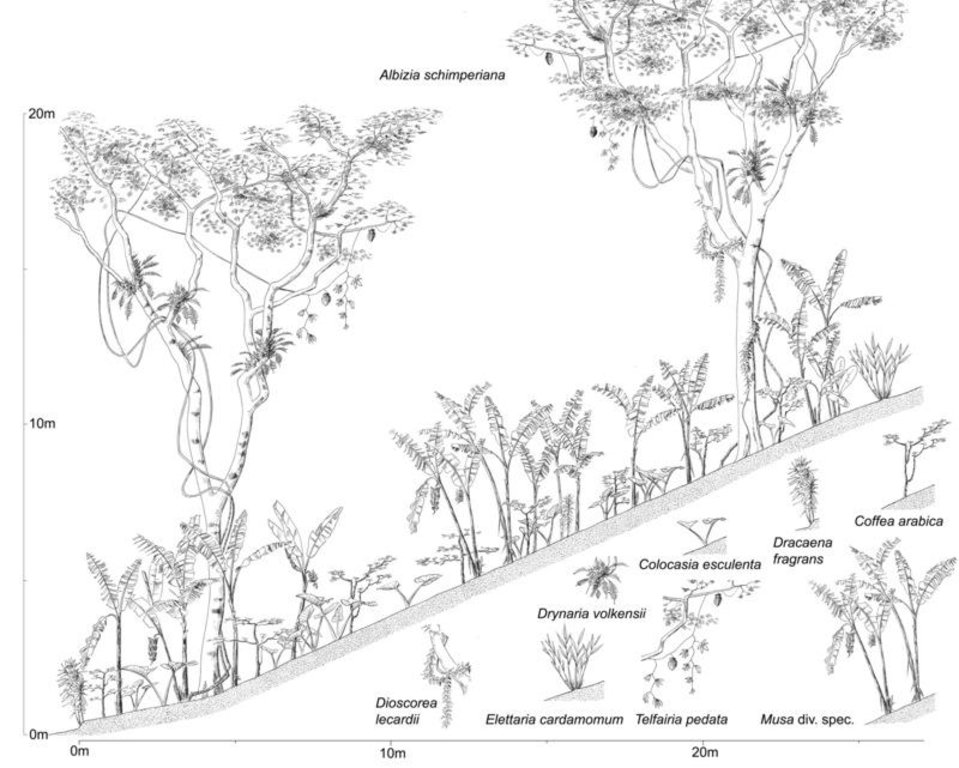Chagga Homegardens [Tanzania, United Republic of]
- Creation:
- Update:
- Compiler: Unknown User
- Editor: –
- Reviewer: David Streiff
technologies_1337 - Tanzania, United Republic of
View sections
Expand all Collapse all1. General information
1.2 Contact details of resource persons and institutions involved in the assessment and documentation of the Technology
Key resource person(s)
SLM specialist:
Hemp Andreas
andreas.hemp@uni-bayreuth.de
University of Bayreuth
Germany
SLM specialist:
Hemp Claudia
claudia.hemp@uni-wuerzburg.de
University of Würzburg
Germany
Name of the institution(s) which facilitated the documentation/ evaluation of the Technology (if relevant)
Universität Bayreuth (UBT) - GermanyName of the institution(s) which facilitated the documentation/ evaluation of the Technology (if relevant)
Julius-Maximilians-Universität Würzburg (JMU) - Germany1.3 Conditions regarding the use of data documented through WOCAT
The compiler and key resource person(s) accept the conditions regarding the use of data documented through WOCAT:
Ja
2. Description of the SLM Technology
2.1 Short description of the Technology
Definition of the Technology:
The Chagga homegardens are traditional, densely planted ‘banana forests’ with a scattered upper tree layer.
2.2 Detailed description of the Technology
Description:
The complex multicropping system evolved over several centuries through a gradual transformation of the natural forest on the footslopes of Kilimanjaro. A Chagga homegarden has an average size of 0.68 ha and integrates numerous multipurpose trees and shrubs with food crops, and stall-fed animals, without a specific spatial arrangement. However, vertically, the following 4 stories/canopies can be distinguished: (1) food crops: taro, beans, vegetables and fodder herbs / grasses; (2) coffee: 500-1,400 plants/ha; (3) banana: primary crop; 50% cover; 330-1,200 clumps/ha; and (4) Trees, such as Cordia abyssinica, Albizia schimperiana and Grevillea robusta. The trees provide shade for coffee, act as live fences, provide medicines, firewood, fodder, mulching material, bee forage; and some have pesticidal properties (e.g. Rauwolfia caffra). This multilayer system maximizes the use of limited land in a highly populated area, making sustained production possible with a minimum of external inputs, minimizes risk (less production failure, increased resistance against droughts and pests) and ensures at the same time environmental protection. The large species diversity provides both subsistence and cash crops. Parts of the homegarden area are irrigated and drained by a network of over 1000 canals and furrows tapping runoff from the montane forest. However, many systems are now in disrepair.
Natural / human environment: Starting in the 1930s when coffee took more space from the food production, it became necessary to expand food production to the lowlands. Today, the Chagga highland homegarden works only in combination with a lowland field where maize, millet, beans, sunflower and groundnuts are grown to ensure food security.
2.3 Photos of the Technology
2.5 Country/ region/ locations where the Technology has been applied and which are covered by this assessment
Country:
Tanzania, United Republic of
Further specification of location:
Mt. Kilimanjaro Region
Map
×2.6 Date of implementation
If precise year is not known, indicate approximate date:
- more than 50 years ago (traditional)
2.7 Introduction of the Technology
Specify how the Technology was introduced:
- as part of a traditional system (> 50 years)
3. Classification of the SLM Technology
3.1 Main purpose(s) of the Technology
- improve production
3.2 Current land use type(s) where the Technology is applied

Mixed (crops/ grazing/ trees), incl. agroforestry
- Agroforestry
Main products/ services:
major cash crop: Coffee, banana, avocado, mango
major food crop: Taro, beans, vegetables and fodder herbs / grasses
Comments:
Type of cropping system and major crops comments: Chagga homegardens are traditional, densely planted ‘banana forests’ with a scattered upper tree layer
3.3 Further information about land use
Water supply for the land on which the Technology is applied:
- mixed rainfed-irrigated
Number of growing seasons per year:
- 2
3.4 SLM group to which the Technology belongs
- agroforestry
- home gardens
3.5 Spread of the Technology
Comments:
Total area covered by the SLM Technology is 1200 m2.
individual homegardens are 0.68 ha on average
3.6 SLM measures comprising the Technology

vegetative measures
- V1: Tree and shrub cover

management measures
- M5: Control/ change of species composition
Comments:
Type of vegetative measures: scattered / dispersed
3.7 Main types of land degradation addressed by the Technology

soil erosion by water
- Wt: loss of topsoil/ surface erosion

chemical soil deterioration
- Cn: fertility decline and reduced organic matter content (not caused by erosion)
Comments:
Main type of degradation addressed: Wt: loss of topsoil / surface erosion, Cn: fertility decline and reduced organic matter content
3.8 Prevention, reduction, or restoration of land degradation
Specify the goal of the Technology with regard to land degradation:
- prevent land degradation
4. Technical specifications, implementation activities, inputs, and costs
4.1 Technical drawing of the Technology
4.2 Technical specifications/ explanations of technical drawing
Typical chagga homegarden on a 45% slope at 1400 m a.s.l. with 4 vegetation layers: open light upper canopy with Albizia schimperiana (up to 20 m high); upper shrub layer with banana (4-6 m); a lower shrub layer with coffee (1.5-2 m) and food crops such as taro (< 1.5 m) -2.5 m; 3-6 m; 5-30 m
Mt. Kilimanjaro Region
Date: 2009
Technical knowledge required for field staff / advisors: moderate
Technical knowledge required for land users: moderate
Main technical functions: control of raindrop splash, stabilisation of soil (eg by tree roots against land slides), increase in organic matter, increase in nutrient availability (supply, recycling,…), increase of infiltration, increase of biomass (quantity), promotion of vegetation species and varieties (quality, eg palatable fodder)
Scattered / dispersed
Vegetative material: T : trees / shrubs
Trees/ shrubs species: Cordia abyssinica, Albizia schimperiana, Grevillea robusta, Rauwolfia caffra, Persea americana
Fruit trees / shrubs species: banana, avocado, mango
Perennial crops species: taro, coffee
Grass species: fodder herbs / grasses
Change of land use type: from natural forests to agroforest
4.3 General information regarding the calculation of inputs and costs
Specify how costs and inputs were calculated:
- per Technology unit
Specify unit:
homegarden
Specify currency used for cost calculations:
- US Dollars
4.4 Establishment activities
| Activity | Type of measure | Timing | |
|---|---|---|---|
| 1. | Transforming the native forest: trees that provided fodder, fuel, fruits, medicines, shade, timber, bee forage, anti-pest properties are retained while the less useful species are eliminated | Vegetative | |
| 2. | Introduction of new fruit and timber tree species, such as avocado, mango, Grevillea robusta, Persea americana | Vegetative | |
| 3. | Planting crops species (banana, coffee, taro, beans, vegetables) | Vegetative | |
| 4. | Establishment of irrigation/drainage channels | Vegetative | |
| 5. | Terracing or building of bunds in steep places | Vegetative |
4.6 Maintenance/ recurrent activities
| Activity | Type of measure | Timing/ frequency | |
|---|---|---|---|
| 1. | Planting, tending and harvesting of bananas, taro, yams / Opening up the canopy to ensure better fruiting of the coffee | Vegetative | all year round |
| 2. | Spacing out the banana stools; Manuring crops (using dung from the stall-fed livestock and compost) | Vegetative | |
| 3. | Lopping fodder trees/shrubs; Pruning and spraying against coffee berry disease and leaf rust | Vegetative | |
| 4. | Maintaining irrigation furrows; Coffee harvest | Vegetative | August to January |
| 5. | Tending and milking the stall-fed cows (typically only one cow) / Mulching, terrace maintenance (soil erosion prevention in general) | Vegetative |
4.7 Costs and inputs needed for maintenance/ recurrent activities (per year)
| Specify input | Unit | Quantity | Costs per Unit | Total costs per input | % of costs borne by land users | |
|---|---|---|---|---|---|---|
| Labour | Planting, tending and harvesting | unit | 1.0 | 300.0 | 300.0 | 100.0 |
| Equipment | Tools | unit | 1.0 | 45.0 | 45.0 | 100.0 |
| Fertilizers and biocides | Compost / manure | unit | 1.0 | 100.0 | 100.0 | 100.0 |
| Total costs for maintenance of the Technology | 445.0 | |||||
Comments:
Machinery/ tools: axes, hoes, pangas (machetes)
5. Natural and human environment
5.1 Climate
Annual rainfall
- < 250 mm
- 251-500 mm
- 501-750 mm
- 751-1,000 mm
- 1,001-1,500 mm
- 1,501-2,000 mm
- 2,001-3,000 mm
- 3,001-4,000 mm
- > 4,000 mm
Specifications/ comments on rainfall:
depending on slope orientation and altitude
Agro-climatic zone
- sub-humid
Thermal climate class: tropics
Tropical montane; bimodal: long rains in March-May, short rains in Nov-Dec
5.2 Topography
Slopes on average:
- flat (0-2%)
- gentle (3-5%)
- moderate (6-10%)
- rolling (11-15%)
- hilly (16-30%)
- steep (31-60%)
- very steep (>60%)
Landforms:
- plateau/plains
- ridges
- mountain slopes
- hill slopes
- footslopes
- valley floors
Altitudinal zone:
- 0-100 m a.s.l.
- 101-500 m a.s.l.
- 501-1,000 m a.s.l.
- 1,001-1,500 m a.s.l.
- 1,501-2,000 m a.s.l.
- 2,001-2,500 m a.s.l.
- 2,501-3,000 m a.s.l.
- 3,001-4,000 m a.s.l.
- > 4,000 m a.s.l.
Comments and further specifications on topography:
Slopes on average: Also steep (31-60%)
Altitudinal zone: 1000-1800 m.a.s.l.
Landforms: Orientation south / south-east
5.3 Soils
Soil depth on average:
- very shallow (0-20 cm)
- shallow (21-50 cm)
- moderately deep (51-80 cm)
- deep (81-120 cm)
- very deep (> 120 cm)
Topsoil organic matter:
- high (>3%)
If available, attach full soil description or specify the available information, e.g. soil type, soil PH/ acidity, Cation Exchange Capacity, nitrogen, salinity etc.
Soil fertility is high
5.5 Biodiversity
Species diversity:
- high
5.6 Characteristics of land users applying the Technology
Market orientation of production system:
- mixed (subsistence/ commercial
Relative level of wealth:
- poor
Individuals or groups:
- individual/ household
Level of mechanization:
- manual work
Indicate other relevant characteristics of the land users:
Land users applying the Technology are mainly disadvantaged land users
Population density: > 500 persons/km2
5.7 Average area of land owned or leased by land users applying the Technology
- < 0.5 ha
- 0.5-1 ha
- 1-2 ha
- 2-5 ha
- 5-15 ha
- 15-50 ha
- 50-100 ha
- 100-500 ha
- 500-1,000 ha
- 1,000-10,000 ha
- > 10,000 ha
Is this considered small-, medium- or large-scale (referring to local context)?
- small-scale
5.8 Land ownership, land use rights, and water use rights
Land ownership:
- individual, not titled
- individual, titled
Land use rights:
- individual
Comments:
traditional clan regulations (land cannot be sold to outsiders)
6. Impacts and concluding statements
6.1 On-site impacts the Technology has shown
Socio-economic impacts
Production
wood production
Comments/ specify:
Fuelwood production 1.5-3 m3/ha/year
risk of production failure
product diversity
Comments/ specify:
185 kg beans/ha; 410 kg coffee/ha; 400 bunches of banana /ha; ca. 30 kg honey/ha
Income and costs
workload
Comments/ specify:
increased labour efficiency
Other socio-economic impacts
value of gene pool
Comments/ specify:
for breeding programmes to improve crop varieties for multistorey cropping systems
Socio-cultural impacts
food security/ self-sufficiency
health situation
preservation of traditional knowledge
Ecological impacts
Soil
soil cover
soil loss
Biodiversity: vegetation, animals
plant diversity
Comments/ specify:
over 500 plant species including 400 non-cultivated plants
animal diversity
pest/ disease control
Other ecological impacts
micro-climate
biodiversity / crop diversity
Comments/ specify:
? land use change from natural forest to agroforest
6.3 Exposure and sensitivity of the Technology to gradual climate change and climate-related extremes/ disasters (as perceived by land users)
Gradual climate change
Gradual climate change
| Season | Type of climatic change/ extreme | How does the Technology cope with it? | |
|---|---|---|---|
| annual temperature | increase | well |
Climate-related extremes (disasters)
Meteorological disasters
| How does the Technology cope with it? | |
|---|---|
| local rainstorm | well |
| local windstorm | well |
Climatological disasters
| How does the Technology cope with it? | |
|---|---|
| drought | well |
Hydrological disasters
| How does the Technology cope with it? | |
|---|---|
| general (river) flood | well |
Other climate-related consequences
Other climate-related consequences
| How does the Technology cope with it? | |
|---|---|
| reduced growing period | well |
Comments:
the system has a high buffer capacity (micro-climate, biodiversity, irrigation)
6.4 Cost-benefit analysis
How do the benefits compare with the maintenance/ recurrent costs (from land users' perspective)?
Short-term returns:
positive
Long-term returns:
very positive
6.5 Adoption of the Technology
- more than 50%
Of all those who have adopted the Technology, how many have did so spontaneously, i.e. without receiving any material incentives/ payments?
- 90-100%
Comments:
100% of land user families have adopted the Technology without any external material support
Comments on adoption trend: Locally well adopted traditional land use system, covering an area of approximately 1200 km2; further spread at local level is not possible due to land shortage.
6.7 Strengths/ advantages/ opportunities of the Technology
| Strengths/ advantages/ opportunities in the compiler’s or other key resource person’s view |
|---|
| this system allows for maintaining high biodiversity at the same time with diversified production of fruits, vegetables, timber, medicinal products etc. |
6.8 Weaknesses/ disadvantages/ risks of the Technology and ways of overcoming them
| Weaknesses/ disadvantages/ risks in the land user’s view | How can they be overcome? |
|---|---|
| High demand of wood, low coffee prices and the introduction of sun-tolerant coffee varieties endanger the homegardens | incentive-based tree planting in the gardens to reduce the pressure on the forest |
| Weaknesses/ disadvantages/ risks in the compiler’s or other key resource person’s view | How can they be overcome? |
|---|---|
| Productivity of Chagga homegardens is not optimal | (1) Replace the less productive trees / shrubs with fast growing nitrogen fixing species; (2) improve animal husbandry (e.g. to increase lactation period), (3) improve apiculture, |
| Productivity of Chagga homegardens is not optimal | (4) introduce new crop varieties using the gene pool developed by natural and farmer selection, (5) use fertilizers, |
| Productivity of Chagga homegardens is not optimal | (6) improve coffee production: certified production (organic, fair trade) to fetch higher prices, (7) replace old coffee plants with new ones, (8) integrated pest management, (9) facilitate access to capital for farm investments |
| Productivity of Chagga homegardens is not optimal | (10) improve erosion control (terraces and bunds), (11) include productive fruit trees, (12) improve advisory services |
| Water management causes nutrient loss in the gardens and water shortages on the lower slopes | improve efficiency of furrows: Install pipes and surfacing by cement, protect river banks from cultivation |
7. References and links
7.2 References to available publications
Title, author, year, ISBN:
Hemp, A. (1999): An ethnobotanical study on Mt. Kilimanjaro. Ecotropica 5: 147-165
Title, author, year, ISBN:
Hemp, A. (2006): The banana forests of Kilimanjaro. Biodiversity and conservation of the agroforestry system of the Chagga Homegardens. Biodiversity and Conservation 15(4): 1193-1217.
Title, author, year, ISBN:
Hemp, C. (2005): The Chagga Home Gardens – relict areas for endemic Saltatoria Species (Insecta: Orthoptera) on Mt. Kilimanjaro. Biological Conservatrion 125: 203-210.
Title, author, year, ISBN:
Hemp, A., C. Lambrechts, and C. Hemp. (in press). Global trends and Africa. The case of Mt. Kilimanjaro. (UNEP, Nairobi)
Title, author, year, ISBN:
Hemp, A., Hemp, C., Winter, C. (2009) Environment and worldview: The Chagga homegardens. In: Clack, T.A.R. (ed.) Culture, history and identity: Landscapes of inhabitation in the Mount Kilimanjar area, Tanzania. BAR International Series 1966, Archaeopress Oxford, pp. 235-303
Title, author, year, ISBN:
Fernandes E.C.M., Oktingati A., Maghembe J. 1985. The Chagga homegardens: a multistoried agroforestry cropping system on Mt. Kilimanjaro (Northern Tanzania) in Agroforestry Systems 2: 73-86
Links and modules
Expand all Collapse allLinks
No links
Modules
No modules





